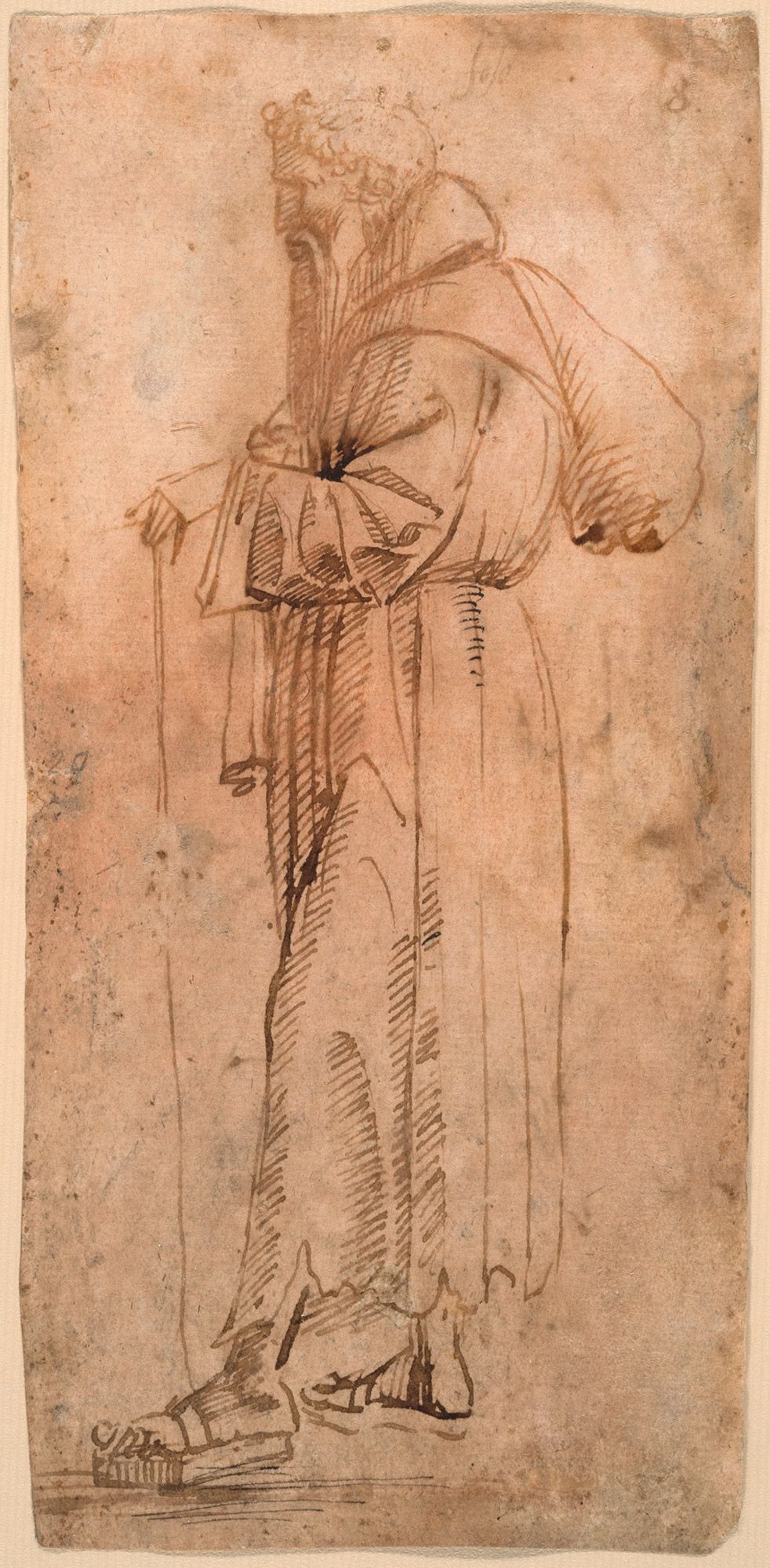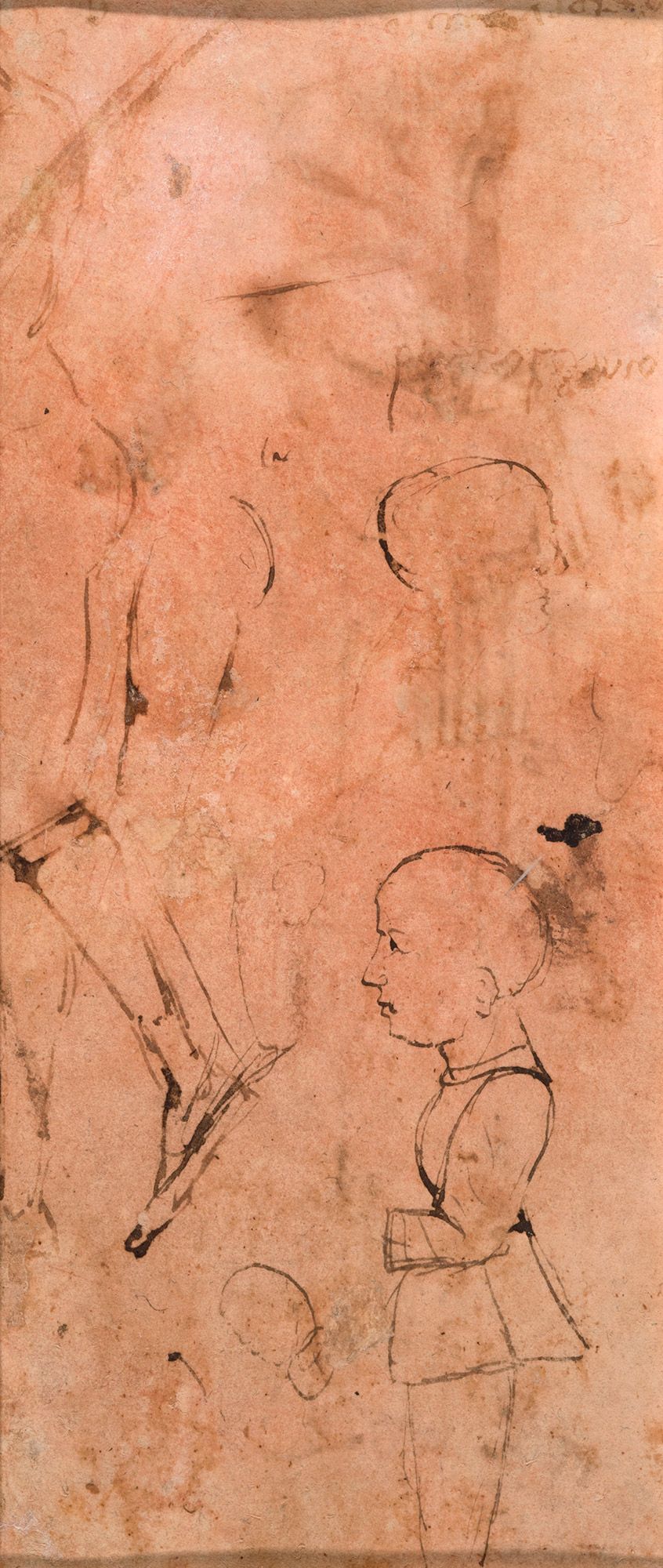FJK 042
School of Verona (16th century)
Monk in Left Profile Carrying a Bag (recto)
Studies of Figures (verso)
16th century
8 15/32 × 5 29/32 in. (215 × 150 mm)
Medium
Pen and brown ink on pink prepared paper
Inscribed in brown ink and numbered, upper: di ant.o faso 8
Indistinct inscription on the back
Origin
Album Antonio II Badile
Earl Lodovico Moscardo Collection, Verona
The Matthiesen Gallery, London
Sale, Sotheby’s, London, Succession Mattthiesen, October 21, 1963, no. 68
Sale, Sotheby’s, London, July 10, 2002, no. 88 (under Venetian School, 16th century)
Jan Krugier Collection, Monaco, JK 6070
Jan Krugier Foundation
Notes
This drawing comes from a small album made up principally of drawings by fifteenth and early sixteenth century artists working in Verona, Padua and Venice. A fragmentary inscription on the flyleaf (which is now in the Institut Néerlandais, Paris) records that it was assembled circa 1500, but the complete date and the name of the collector are lost. The album itself was broken up in 1954 and a group of the drawings was sold with property from the Matthiesen estate, in these Rooms, 21 October 1963, including one with the same inscription: di anto, faso (lot 68, catalogued as by “The Chatsworth Master”). It has always been assumed that Conte Lodovico Moscardo had acquired these drawings from the descendants of Francesco Calzolari senior, the famous botanist and apothecary, who is known to have had a collection of coloured drawings of natural history. The evidence for this provenance seems, however, to be limited to a statement in Lugt’s supplement to his Marques des Collections (The Hague 1956. p. 171, under L. 1171b), to the effect that the Moscardo collection passed to the Marquis de Calceolari. This erroneous information was probably provided by the Florentine dealer Luigi Grassi, who purchased a large part of Moscardo’s collection from his descendants in 1905. If the Calzolari family, who were never ennobled, did indeed ever own the Moscardo drawings, it would have been before and not after, but it is most unlikely that a family of apothecaries should have owned an important collection of old master drawings (see C. Fahy, Printing a book at Verona in 1622, Paris 1993, pp. 9-10 and p. 31 no. 59). Several of the drawings were inscribed artemio and have since been attributed to Bernardo Parentino. The present drawing is by a quite different hand, and would seem to be Venetian or Veronese in origin. In a letter to the owner, dated 1978, Bernhard Degenhart suggested a Veronese artist, perhaps in the circle of Francesco Benaglio.
Sotheby’s, Old Master Drawings, London July 2002
Request for information/loan
The Jan Krugier Foundation is devoted to increasing the impact of the collection of drawings through regular loans to major exhibitions. Loan applications should include a complete presentation of the project.


